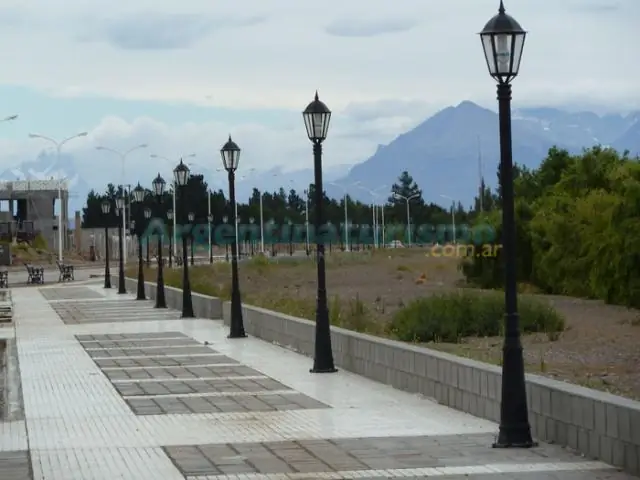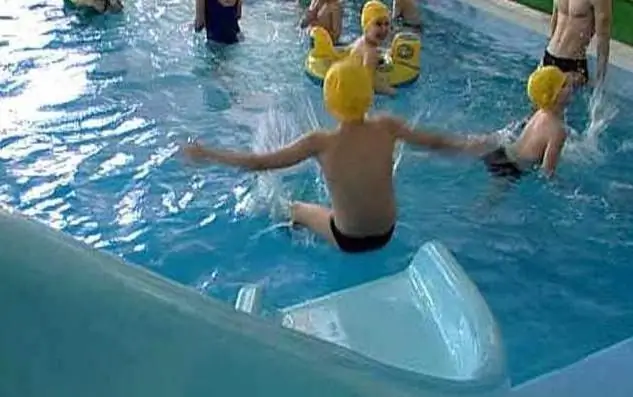- Author Harold Hamphrey [email protected].
- Public 2023-12-17 10:06.
- Last modified 2025-01-24 11:10.
Istanbul is a city that annually attracts millions of tourists from all over the world. Centuries-old history, thousands of monuments of architecture and art, many places where huge and diverse expositions are presented. All the most interesting from different eras are presented in the Archaeological Museum of Istanbul.
Location of the complex
In an effort to see as much as possible during your stay in one of the largest cities in Turkey, it is worth carefully preparing for the trip. It will take quite a lot of time to explore the Archaeological Museum in Istanbul. Therefore, finding it on the map and making a route in advance is an important preparatory stage.

You can get to the complex by taxi, immediately indicating the purpose of the trip, or by public transport. If you want to save some money, you can use the tram tracks. A special tourist route has been operating for many years. The high-speed tram, moving along the T1 line, having passed through the historically most crowded streets of the Old Town,will allow you to get off at the Gulhane Park stop. From it to the Archaeological Museum in Istanbul is a stone's throw away.

You can get your bearings in Gulhane Park. He will be on the left. Topkapi Palace - on the right and a little behind the museum. In the part of the park through which you will need to proceed, there are corresponding signs.
Istanbul Archaeological Museum opening hours
The complex is open to visitors all days except Monday. When planning an independent trip to it, one should also take into account the fact that in the first half of the day organized groups of tourists come to view the exposition.

Opening hours of the Archaeological Museum in Istanbul: from 9 am to 5 pm. At the same time, the box office closes at 16:15, after which it is impossible to purchase a ticket.
Museum Tickets
There are three ways to buy a ticket.
- Personally at the museum box office. At the time of writing, you need to pay about 7.5 euros.
- Online, through one of the Internet resources involved in their implementation. However, the cost may vary. It is usually more than what is requested at the box office. Approximately it is from 8 to 10 euros.
- At the airport, through the official website or at the ticket office of one of the museums, you can purchase a card. This is a kind of entrance ticket to several historical centers of the city at once, including the Archaeological Museum in Istanbul. It costs 85 Turkish lira, and allows you to see a dozen palaces, cathedrals and museum complexes in five days. In addition, according to the mapyou can get a discount on admission to two dozen other attractions.

The last option allows you to save some money, but in the event that the traveler has enough time and wants to really see all the pearls of Istanbul.
One of the advantages of Turkish museums is the opportunity to visit them for free for children up to 12 years old inclusive. This means that parents do not need to buy a ticket or card for their child, but will need to bring proof of age with them.
History of the creation of the museum
The museum owes its appearance to the Turkish painter Osman Hamdi Bey, who, in addition to reflecting the surrounding world on the canvas, is also interested in archeology. He initiated the construction of the complex, the founder of the collection and the first director.
The construction began in the summer of 1881. A decade later, the complex opened its doors to visitors for the first time. At the same time, construction work continued until 1907, when wings were added to the main building. And in 1991, a six-story building was added to the main building.

The last reconstruction was carried out partially. Only the part representing the Ancient East was restored. The work was carried out from 1963 to 1974. Already at the end of the 20th century, another pavilion was added to the complex, which was previously considered an independent attraction and existed since 1472.
Museum complex and main values in expositions
Actually, the museum is a whole complex consisting of three buildings.
Central building. This is the largest part of the museum. The entire first floor is occupied by large exhibits relating to the Hellenistic and Roman periods. These are tombs and statues in chronological order from various regions. On the second floor there are finds from Troy and those that belong to the most ancient civilizations of Asia Minor. The collections contain about 800 thousand Ottoman coins, almost a hundred thousand books, as well as medals, seals, jewelry, figurines and many utensils. In the six-story building, the first two floors are reserved for storage, and the rest for thematic exhibitions. There is also a special exhibition for schoolchildren

Tile pavilion. The construction is one solid exposition of ceramics, porcelain, enamels and mosaics of the Seljuk and Ottoman periods. This is about six rooms, where two thousand exhibits are presented

Museum of the Ancient East. All the values of this corpus date back to pre-Roman times. Many exhibits are of world significance

Surveying the collections is a fascinating affair, able to lure visitors into the walls of the complex for at least a whole day. For sure, none of them will leave without a photo of the Archaeological Museum in Istanbul or its exhibits.
Core values in displays
The museum has such a large number of artifacts that it can amaze any imagination. This is a lot of ancient sarcophagi and tombs, statues and busts and otherspecimens belonging to the most ancient civilizations.

Most famous:
- Sidon sarcophagus;
- sarcophagi of mourners, Tabnit, satrap;
- fragments of temple complexes from Pergamon, from Asos;
- statues of Zeus, Cybele;
- artifacts from Troy;
- calendar from Gezer and more.
At the end of the 19th century, part of the exhibits of the Military Museum joined the exposition. Basically, these are samples of weapons of the XV-XVIII centuries. And for some of them, the owner has not yet been established. Although the samples themselves have enough distinctive features for this. For example, the debate about whose huge sword is kept in the Archaeological Museum of Istanbul is still ongoing, although everyone knows the place where it was found. Weapons are on display, richly adorned with jewels or made of precious steels, the secret of whose creations is lost in time.
Opinion of visitors about the museum
Most of the reviews about the Archaeological Museum in Istanbul are enthusiastically shocked. The number of exhibits on display is phenomenal. This allows more than 450,000 visitors of all ages to touch history every year.

Many exhibits are of world importance. There are no analogues anywhere else. Moreover, these values belong not only to the history of Turkey itself, but also to many civilizations that have ceased to exist today. These exhibits still allow you to make new discoveries, and attract the attention of many hundreds ofscientists.

For most visitors, a day at the museum will bring unforgettable experiences and memories. For those who arrived without a group and accompaniment, it is possible to take an audio guide at the entrance on bail in the form of a document or some amount of money. There are also versions in Russian. This will allow not only to enjoy the beauty of the exhibits, but also to learn a lot of new things.






